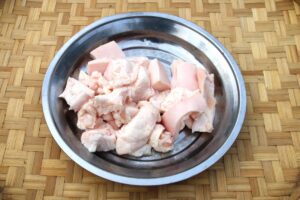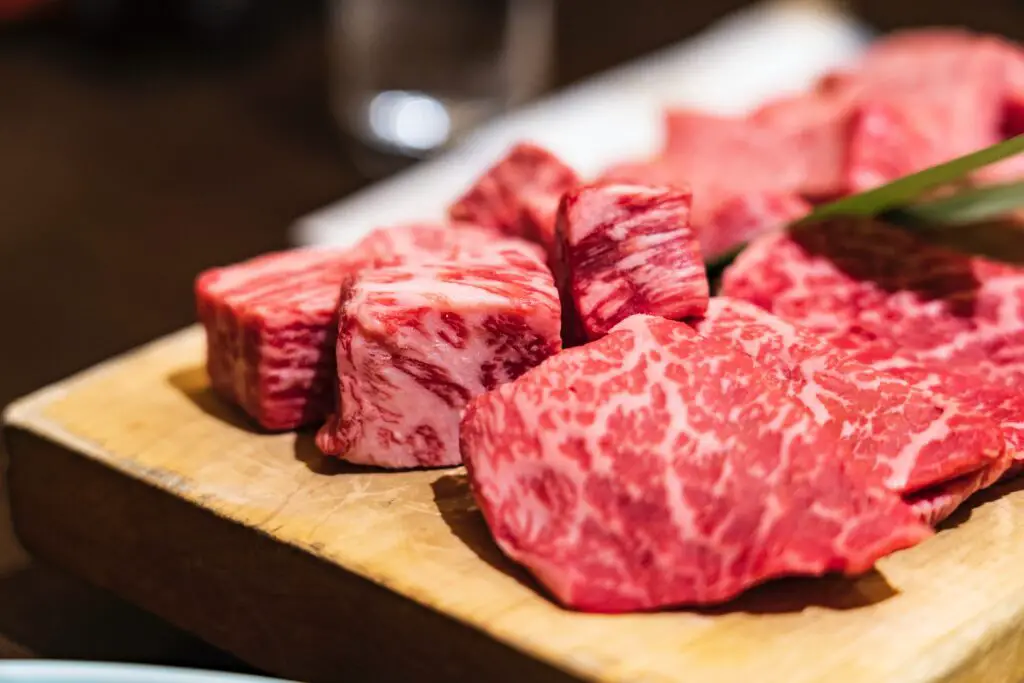
Whether you fancy yourself as a master cook, or a beginner, the idea of coming home and cooking yourself a thick, juicy steak is still as exciting.
If you’ve cooked steak before, you’re probably aware that there are a variety of factors that can influence your steak’s flavor.
Some of these include any marinades and seasoning, the cut of meat, the method you used to cook it and, of course, the oil.
Yes, the oil you use plays a huge role in this!
So, if you want to learn about which oils you should use to cook your steak, you’re in the right place. Here, I’m going to go through everything you need to know about the oils you should be cooking your steaks with.
Do I Need To Use Oil?
Cooking a steak at home may cause you to ask yourself, should I cook my steak in butter or oil? Many would agree that oil is the best option.
Butter can burn quickly and easily at lower temperatures compared to oil. This means that you either have burnt butter, or not enough heat to cook your steak properly.
Of course, you can combine butter and oil to get good results, too. However, by just using butter and a searing hot pan, the butter won’t fare very well.
The burnt butter will affect the taste of your steak. It will turn the meat bitter. Even if you’re cooking something different, like a steak stir-fry, you still need a somewhat hot pan to get the meat going.
Overall, using only butter just isn’t a good option if you want tender and rich results.
Which Oil Is Best To Use For Steak?
When cooking steak, you may not have realized the type of oil you cook it in can affect how the steak cooks and tastes. It’s something that gets overlooked a lot, after all.
If you’re going to cook a steak, you should use an oil that has a high smoke point. In other words, it should be able to withstand temperatures of up to 400 degrees Fahrenheit or more.
This is because searing steaks requires high temperatures. If you use an oil with a low smoke temperature, it will burn quickly and impact the flavor of the steak.
Other characteristics to look for in an oil are those with a neutral flavor. Not only that, but they should be light in color.
These characteristics mean the oil will not compromise the flavor of the steak or produce a bad smell when cooking at high temperatures. This also means that that oil won’t reach its flash point, where it starts to burn.
Oils that meet these characteristics include avocado oil, vegetable oil, grapeseed oil, vegetable oil, peanut oil and canola oil.
Obviously, you need to be careful with some of these oils because of potential allergies. Before you start cooking, read below which oil is best suited to you.
Avocado Oil
Avocado oil can be refined or unrefined. The refined oil, which simply means that it has been extracted using heat and then purified, has a more mild flavor compared to unrefined. As such, it’s better suited for cooking steaks as it won’t impact the flavor.
This oil has a somewhat neutral taste. The unrefined avocado oil has a slightly stronger flavor, so it probably shouldn’t be used for steaks.
Avocado oil has the highest smoke point out of all the oils, coming in at an impressive 520 degrees Fahrenheit. This means that it’s a great option for steak cooking and won’t burn or smoke at the high temperatures needed.
Canola Oil
If you’ve never heard of canola oil before, it’s a vegetable-based oil made from crushed canola seeds from the rapeseed plant.
The process of making the oil does involve synthetic chemicals that help extract the oil, so it may not be suited to everyone.
However, you can shop around to buy all-natural canola oil versions. We recommend it for cooking a steak as it can withstand high heat, it’s rich in Omega-3s and is an affordable, versatile option.
The smoke point of canola oil stands 400 degrees Fahrenheit, so it’s another great and safe option.
Peanut Oil
Peanut oil is widely recommended as a great oil for cooking steak. This vegetable-derived oil is made from the seeds or nuts of the peanut plant, which grows underground.
Depending on how the nuts are processed, peanut oil can be found to have a wide variety of flavors. In this context, we would recommend using a neutral to mild version to not compromise the natural flavor of the steak.
Using peanut oil has certain advantages, as it’s a good source of vitamin E and antioxidants known for reducing the risk of heart disease. The smoke point of this oil stands at 450 degrees Fahrenheit, which is high enough to sear steak perfectly!
On the downside, peanut oil can be a little more expensive. This is because it’s produced in smaller quantities than others. However, if you’re willing to shop around, you can usually find a good deal.
Grapeseed Oil
Grapeseed oil has a relatively high smoke point of around 390 degrees Fahrenheit, making it a great option if you’re using a cast-iron skillet.
Grapeseed oil is actually a byproduct of winemaking, after the grapes are pressed the leftover seeds are extracted in order to make the oil.
It’s high in omega-6 fatty acids, making it one of the healthier options when used in place of saturated or trans fats.
The way the oil is processed can influence the health benefits, so buying an organic or natural version that has been cold-pressed can be a great alternative.
How To Cook Steak With Oil For Best Results
Only a little oil is needed to cook a steak. To get the best results, the pan or skillet you’re using should be greased with oil. You can do this using a paper towel or a basting brush.
This will aid in transferring heat from the pan to the steak, creating a mouthwatering flavor and a crispy coating. It will help get the steak’s exterior nice and crisp, too.
You can still add a little extra if you’re concerned about the steak sticking to the pan. However, less is more when it comes to steak. You’re eating the steak for the flavor of the meat, not the oil, anyway!
Griddle pans or cast iron skillets are great tools to use to cook steak. They can get really hot and retain their heat well, which is just what you want when searing meat. They are also the ideal shape and size for the job, and will last you years.
Alternatively, you can also use an electric grill or frying pan if you have one, but the first options will produce the best results.
Final Thoughts
What might work for you might not work for others. In cooking, everything comes down to your dietary requirements and personal preferences. You might love cooking your steak with avocado oil, but someone who is sensitive to the flavor might hate it.
The best way to find out which oil is right for you is through trial and error.
Overall, avocado oil can be considered the best oil to use to cook a steak in terms of the meat itself, as it has the highest smoke point.
However, it does have a flavor, even if it’s mild. This oil is also one of the more expensive options available.
Because of this, it’s a great option if you only cook steak occasionally. However, even then, you need to take into consideration the shelf life of this oil. If you are an avid steak lover, or like to watch your money, simply use canola oil.
Hopefully, this article has helped you understand oils a little more. Now that you know everything you need to, get out there and cook those steaks!








